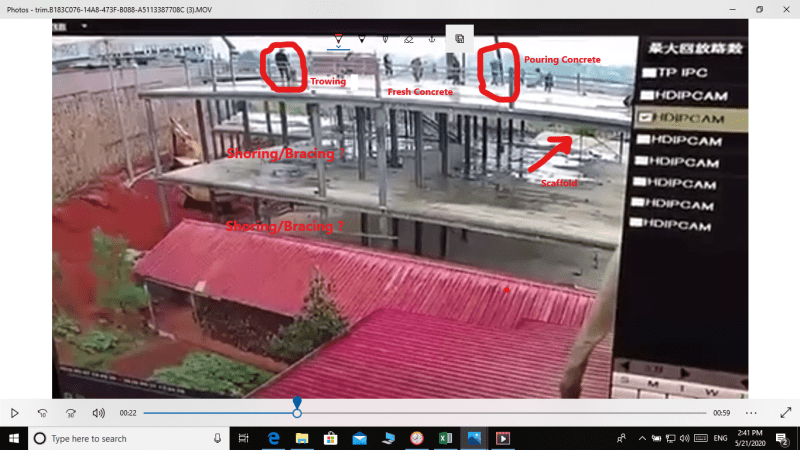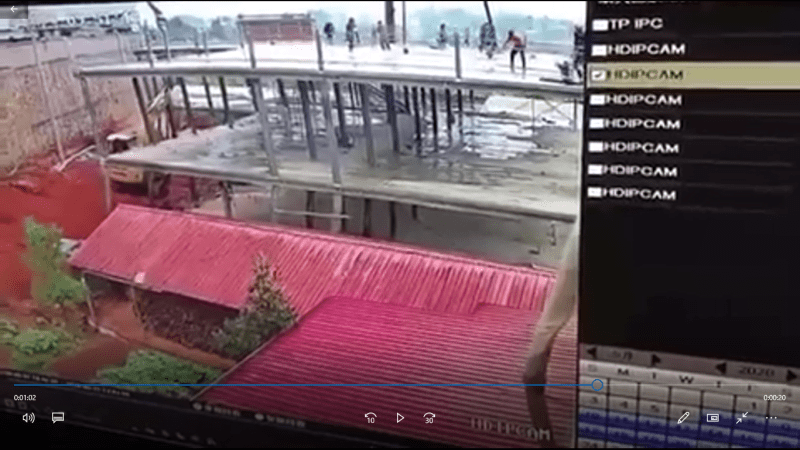What kind of failure it will be? Strength or stability failure? See video from below link
Navigation
Install the app
How to install the app on iOS
Follow along with the video below to see how to install our site as a web app on your home screen.
Note: This feature may not be available in some browsers.
More options
Style variation
-
Congratulations MintJulep on being selected by the Eng-Tips community for having the most helpful posts in the forums last week. Way to Go!
You are using an out of date browser. It may not display this or other websites correctly.
You should upgrade or use an alternative browser.
You should upgrade or use an alternative browser.
What kind of failure it will be? St 13
- Thread starter Myo Maung
- Start date
- Status
- Not open for further replies.
-
1
- #4
This things give me the shivers.
First guess would appear to be stability. Hard to tell what type of structural system it is. I would guess steel beams/decking and columns but the video clarity isn't the best. You can't can't see what is happening along the right side of the building either.
All of the columns appear to move along the first floor, in the same direction at the same time. I would like to think the members were not undersized as they are not really seeing their full design load at all.
First guess would appear to be stability. Hard to tell what type of structural system it is. I would guess steel beams/decking and columns but the video clarity isn't the best. You can't can't see what is happening along the right side of the building either.
All of the columns appear to move along the first floor, in the same direction at the same time. I would like to think the members were not undersized as they are not really seeing their full design load at all.
-
1
- #6
JoshPlumSE
Structural
Wow.... I'd say that this is primarily stability No significant lateral load resisting system. So, the second you get a little bit of lateral displacement or lateral loading, the lateral displacement increases until 2nd order / stability effects cause strength failures and the whole thing goes down.
-
1
- #7
-
1
- #8
The camera has a lot of distortion, which is why the third level shows a significant bow, compared to the second level.
Seems to me to be a very ad hoc "design" since there is nothing resisting lateral forces, so even if it had successfully completed construction, any wind likely would have toppled the building, with possibly a lot more people in it.
TTFN (ta ta for now)
I can do absolutely anything. I'm an expert! faq731-376 forum1529 Entire Forum list
Seems to me to be a very ad hoc "design" since there is nothing resisting lateral forces, so even if it had successfully completed construction, any wind likely would have toppled the building, with possibly a lot more people in it.
TTFN (ta ta for now)
I can do absolutely anything. I'm an expert! faq731-376 forum1529 Entire Forum list
-
1
- #11
Usually the floor should be fully supported during concreting, and the full shoring shall at least stays through the end of curing period, then reduce the shoring only when the concrete has achieved specified strength. In this case, the contractor are in a hurry to complete the project by removing the form works too soon, while the concrete is very young with very little strength. The concreting activity near the edge produces an eccentric loading effect, causing sway mechanism that pushed the structure to fail.
-
1
- #12
It's not clear whether there ever would have been shear walls to be built, though. Seems to me that if there were shear walls in the design, the engineer should have either designed them to be present during the floor pours, or had required shoring, but it seems dubious to me that sufficient shoring could have been installed that wouldn't have interfered with the pour, vs. building the shear walls in the first place.
TTFN (ta ta for now)
I can do absolutely anything. I'm an expert! faq731-376 forum1529 Entire Forum list
TTFN (ta ta for now)
I can do absolutely anything. I'm an expert! faq731-376 forum1529 Entire Forum list
-
1
- #13
Yeah, I can't imagine a situation where you would pour the columns but not the shear walls. Generally speaking for cast-in-place type construction you do a vertical pour (columns and walls) then a horizontal pour (slabs and/or beams). So I don't see why the shear walls would have been left out.
If, however, it was supposed to be braced with steel bracing, then sure I can see why that would interfere with construction. But that means then you have to provide an alternate temporary bracing until all lateral load resisting elements are installed.
If, however, it was supposed to be braced with steel bracing, then sure I can see why that would interfere with construction. But that means then you have to provide an alternate temporary bracing until all lateral load resisting elements are installed.
-
1
- #15
I don't believe there was any formwork on either level at any time. Looks like the floor system was intended to carry a concrete topping, so no formwork was necessary. Looks like a stability failure; the columns behaved as though they were hinged at the second level.
BA
BA
-
1
- #16
-
1
- #17
Looks like the floor system was intended to carry a concrete topping, so no formwork was necessary.
It is a possibility, but depending on the age of the concrete, I've difficulty to accept "no formwork" is necessary. See how many workers gathered in a small area of the slab, a highly unbalanced live load pattern.
- Status
- Not open for further replies.
Similar threads
- Replies
- 8
- Views
- 4K
- Question
- Replies
- 26
- Views
- 22K
- Replies
- 17
- Views
- 7K
- Question
- Replies
- 8
- Views
- 4K
- Locked
- Question
- Replies
- 1
- Views
- 2K


